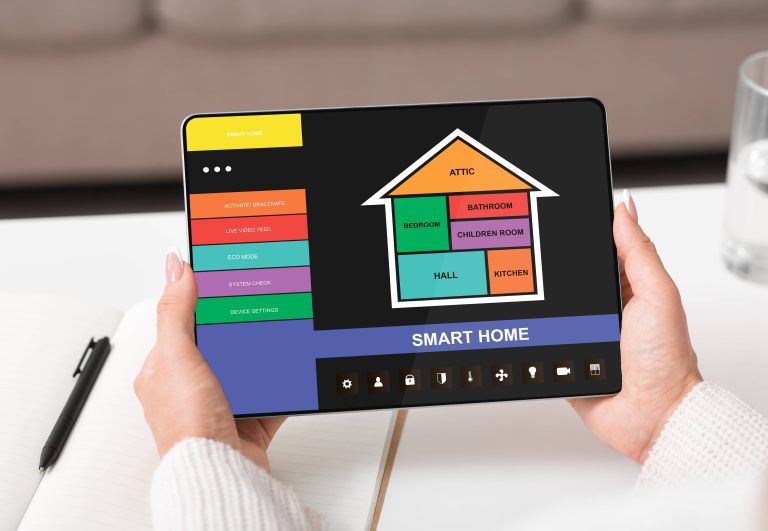
As technology advances and the Internet of Things (IoT) becomes increasingly integrated into our daily lives, the concept of a “smart home” includes not only convenience but also enhanced security features. One of the most vital components of a robust smart home security system is the panic button. In this blog post, we’ll explore what smart panic buttons are, why they are essential, and how to set them up for maximum effectiveness.
What is a Smart Panic Button?
A panic button is a simple yet powerful device used to alert security services or designated contacts in case of an emergency. When integrated into a smart home system, a panic button can trigger a variety of responses, from alerting the police to activating cameras, sirens, and sending real-time notifications to family members.
Smart panic buttons come in various forms, including handheld devices, wall-mounted units, and wearable gadgets. They connect to your home network via Wi-Fi, Zigbee, or Z-Wave, making them versatile and easy to incorporate into existing smart home ecosystems.
Why a Panic Button is Essential
Immediate Response
In the event of an emergency, time is of the essence. A panic button provides a quick and efficient way to request help without the need to find a phone and make a call. This is particularly useful in situations where every second counts, such as home invasions, medical emergencies, or fires.
Accessible for All
Panic buttons offer an accessible solution for everyone in the household, including children, elderly family members, and individuals with disabilities. The simplicity of pressing a button eliminates the need for more complex actions, making it a highly inclusive security feature.
Deterrent Effect
The presence of a panic button can serve as a deterrent to potential intruders. Knowing that the occupants have immediate access to emergency services can make your home a less attractive target.
Setting Up a Panic Button in Your Smart Home
Step 1: Choose the Right Panic Button
The first step in integrating a panic button into your smart home is selecting the right device. Here are a few factors to consider:
– Compatibility: Ensure the panic button is compatible with your existing smart home hub or security system.
– Range: Check the operational range of the device to ensure it covers the entire area where you might need it.
– Ease of Use: The button should be intuitive and easy to activate.
– Battery Life: Consider devices with long battery life or those that offer rechargeable options.
Popular brands to consider include SimpliSafe, Ring Alarm, and Aeotec, which offer reliable compatibility with major smart home platforms like Amazon Alexa, Google Assistant, and Apple HomeKit.
Step 2: Plan the Placement
Strategic placement of panic buttons is crucial. Here are some recommended locations:
– Bedrooms: Install buttons near the bed for easy access at night.
– Entry Points: Place buttons near front and back doors in case of forced entry.
– Living Areas: Ensure at least one button is easily accessible from common areas like the living room or kitchen.
– Bathrooms: For homes with elderly or disabled individuals, having a button in the bathroom can be life-saving.
Step 3: Integration with Smart Home Systems
Once you’ve chosen and placed your panic buttons, the next step is integration:
– Connect to Hub: Follow the manufacturer’s instructions to connect the panic button to your smart home hub. This usually involves pairing the device via Wi-Fi, Zigbee, or Z-Wave.
– Configure Alerts: Set up alerts and notifications through your smart home app. You can typically choose to receive push notifications, text messages, or emails in the event of an alarm.
– Set Up Automation: Enhance the functionality of your panic button by creating automation routines. For instance, pressing the button could simultaneously activate all smart lights, lock doors, and trigger security cameras to start recording.
Step 4: Test the System
Testing is a critical step to ensure everything functions as expected. Conduct regular drills to familiarize everyone in the household with the panic button’s location and operation. Confirm that alerts are dispatched promptly and that all automated responses activate correctly.
Step 5: Educate Household Members
Education is key to making sure everyone knows how to use the panic button effectively. Hold a family meeting to demonstrate the system and explain the steps to take in an emergency. For families with children, regular reminders and practice drills can help reinforce this vital information.
Step 6: Maintain and Update
Regular maintenance and updates ensure the panic button remains functional and effective. Check batteries periodically and keep your smart home hub and related apps updated to the latest versions to benefit from security patches and feature enhancements.
Conclusion
Incorporating a panic button into your smart home security system offers peace of mind and provides a life-saving tool in times of crisis. By carefully selecting, placing, and integrating these devices, you can maximize their effectiveness and ensure your home is prepared to handle emergencies swiftly and efficiently.
Remember, the goal of smart home technology is to enhance safety and convenience. By setting up a panic button, you’re taking a crucial step towards creating a secure living environment for you and your loved ones. Happy blogging and stay safe!







